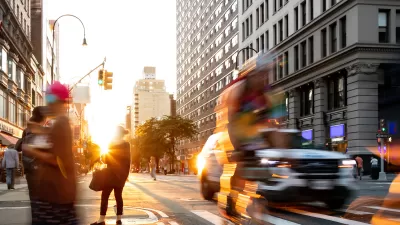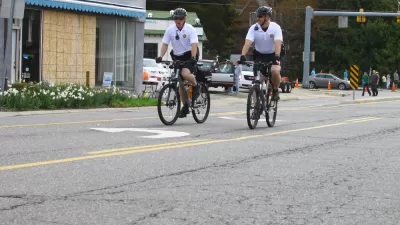The Organization for Economic Cooperation and Development reveals why Americans don't use the healthiest, cleanest form of transportation. Hint: it has to do with the frequent injuries we're trying to avoid.
The OECD finds that bicyclists in the U.S. incur a higher rate of fatalities and injuries in the U.S. compared to counterparts that are working to promote bicycling. Some of the other reasons that keep Americans from biking will shock you, as Matt Phillips writes:
- Just 54% of bicyclist fatalities were considered by investigating officers to have a contributory factor on the part of motorists involved
- "The majority of fatal bike crashes occur in dry or clear conditions (94% in the US and 87% in the UK)"
- And, possibly saddest of all: “Data from the United States indicate that cyclists were imputed with an improper action in 68% of fatal bicycle crashes (though, as noted earlier, this may be biased as the cyclist was not able to give their version of events)."
FULL STORY: 11 Reasons Why Bicycling in the U.S. is Exceptionally Dangerous

Alabama: Trump Terminates Settlements for Black Communities Harmed By Raw Sewage
Trump deemed the landmark civil rights agreement “illegal DEI and environmental justice policy.”

Planetizen Federal Action Tracker
A weekly monitor of how Trump’s orders and actions are impacting planners and planning in America.

The 120 Year Old Tiny Home Villages That Sheltered San Francisco’s Earthquake Refugees
More than a century ago, San Francisco mobilized to house thousands of residents displaced by the 1906 earthquake. Could their strategy offer a model for the present?

In Both Crashes and Crime, Public Transportation is Far Safer than Driving
Contrary to popular assumptions, public transportation has far lower crash and crime rates than automobile travel. For safer communities, improve and encourage transit travel.

Report: Zoning Reforms Should Complement Nashville’s Ambitious Transit Plan
Without reform, restrictive zoning codes will limit the impact of the city’s planned transit expansion and could exclude some of the residents who depend on transit the most.

Judge Orders Release of Frozen IRA, IIJA Funding
The decision is a victory for environmental groups who charged that freezing funds for critical infrastructure and disaster response programs caused “real and irreparable harm” to communities.
Urban Design for Planners 1: Software Tools
This six-course series explores essential urban design concepts using open source software and equips planners with the tools they need to participate fully in the urban design process.
Planning for Universal Design
Learn the tools for implementing Universal Design in planning regulations.
Clanton & Associates, Inc.
Jessamine County Fiscal Court
Institute for Housing and Urban Development Studies (IHS)
City of Grandview
Harvard GSD Executive Education
Toledo-Lucas County Plan Commissions
Salt Lake City
NYU Wagner Graduate School of Public Service





























